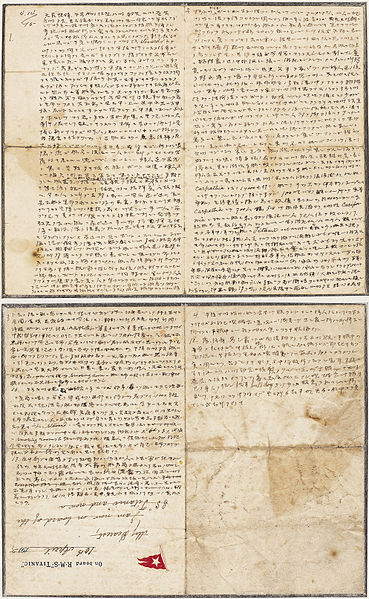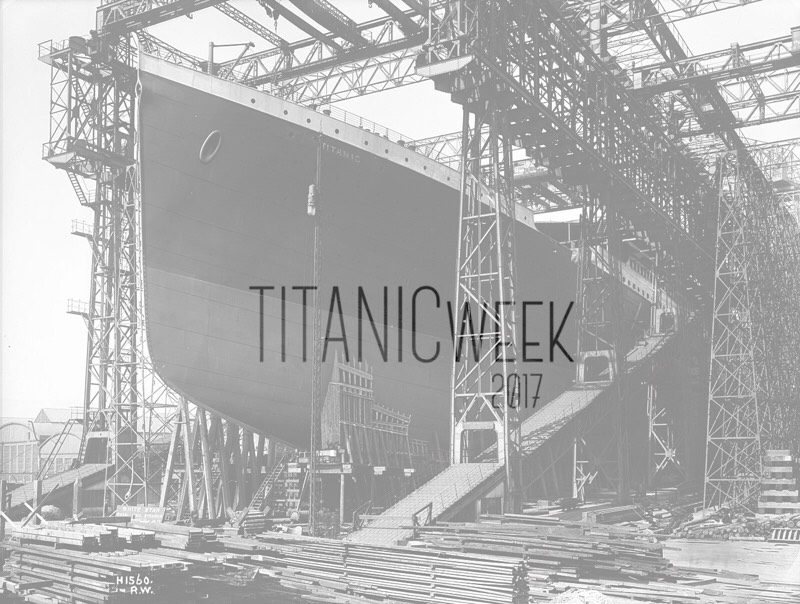“Deep in Desolate Thought”: Masabumi Hosono
Masabumi Hosono was 42 years old when he boarded Titanic as a Second-Class passenger in Southampton.
Hosono was a highly regarded civil servant of the Japanese government. After a brief stint at Mitsubishi, Hosono entered into a career working for the Ministry of Transport.
Having been a graduate of the Russian Department at the Tokyo School of Foerign Languages, Hosono had been sent to Russia in 1910 to study the country's railroad system.
Having done his duty by the beginning of 1912, Hosono elected to head home. He first stopped in London, and then boarded Titanic in Southampton.

Masabumi Hosono.
Hosono slept through the collision on April 14.
He was awoken by knocking at his door around midnight, when a steward ordered Hosono to put on his lifevest. Hosono immediately made his way up to the boatdeck but was turned away and directed to the lower level--as a Japanese man, he was mistaken for a steerage passenger.
Hosono stated that he succeeded in his third attempt to get up on deck, having evaded the notice of a guard.
Hosono later wrote about the scene on deck.
"flares signalling emergency were being shot into the air ceaselessly, and hideous blue flashes and noises were simply terrifying. Somehow I could in no way dispel the feeling of utter dread and desolation."
Citation courtesy of Encyclopedia Titanica.
Hosono mentally prepared himself to die with the honor befitting his countrymen, but he stated that he still found himself seeking any opportunity for survival.
So when an unnamed officer lowering a nearby lifeboat called out, “Room for two more!” and Hosono witnessed a man jump in, he decided to follow suit.
‘I myself was deep in desolate thought that I would no more be able to see my beloved wife and children, since there was no alternative for me than to share the same destiny as the Titanic. But the example of the first man making a jump led me to take this last chance.'
Citation courtesy of Encyclopedia Titanica.
On board the Carpathia, Masabumi Hosono began to write his survivor account.
He repurposed some Titanic stationary that he had initially intended to use to write a letter to his wife.
Dated April 10, 1912, he crossed out the letter’s original beginning—"My Dearest, I am now on board of the SS Titanic”—and proceeded to recount his daily experiences.
He was bored, he wrote, and wracked with nerves from poor weather conditions—he feared another sinking. The conditions were terribly crowded, as the Carpathia was accommodated hundreds of Titanic passengers alongside their own.
And he was isolated. He was reportedly treated with relentless suspicion. He sought sleep in the Smoking Room when he could manage to find a space, but he tended to avoid it otherwise as he claimed seamen ridiculed him throughout the journey.
’Because they are a good-for-nothing band of seamen, anything I say falls of deaf ears… [on the last day] I talked a little about myself; I showed them a bulldog tenacity and finally gained a bit of respect.’
At first, Masabumi Hosono hardly registered among the hundreds the survivor stories. Once he had arrived in New York City, he found his way to friends to ask for help in making his way home, then went on to San Francisco where he departed at last for Japan.
Back home in Tokyo, he was interviewed by multiple periodicals, one of which included a photograph of Hosono with his family.
Shortly thereafter, disgrace came.
Colonel Archibald Gracie, a blustery, a First-Class American who survived the sinking on the back of Collapsible B, released his harrowing account of the sinking.
In it, he referred to Masabumi Hosono as a "Japanese stowaway."

Archibald Gracie IV, whose account of Masabumi Hosono was negative.
Furthermore, witness testimony at the American Senate Hearing damned Hosono, even though it was hearsay in which he was never named.
When asked if there were any make passengers in his lifeboat, crewmember Edward Buley testified that he saw none but was later told that there were “a couple of Japanese” men in the boat. “They never got in our boat,” Buley testified, “unless they came in there dressed as women.”
And that was enough to condemn Masabumi Hosono.
To date, stories such as these are entirely unsubstantiated. Unfortunately, they are never the less predictable—there was, and still is, a fervent game of blame about the Titanic disaster. And no surviving White Star employee wanted to invite the shame of letting imperiled women and children die all for the sake of men.
The esteemed and accomplished Masabumi Hosono lost his job in 1913, fired for his grave dishonor in the Titanic disaster.
He was reportedly referenced in textbook as an exemplia grata of shameful behavior, an ethics professor declared him immoral, though said source materials have yet to be located. Periodicals denounced him.
In short, Masabumi Hosono was entirely ostracized. But being so adept in his field, Hosono was eventually rehired by the Ministry of Transport, and he worked there until his death in 1939, at the age of 68.
But the shame of his ignoble escape continued to cast its pall over his descendants.
In 1997, the Hosono family wrote a letter to thank director James Cameron for not further villifying the family name.
Masabumi Hosono’s private account of his experience, written on board the Carpathia, was discovered hidden at the bottom of a drawer by his granddaughter.
It was subsequently published.
With the release of the film and the passage of time, Masabumi Hosono’s family has at last been granted exoneration. His grandson, an orchestral musician named Haruomi Hosono, attested to feeling “extremely relieved. Honor has been restored to the Hosonos.”

Masabumi Hosono's account of the Titanic disaster.
SOURCE MATERIAL
https://www.encyclopedia-titanica.org/titanic-survivor/masabumi-hosono.html
https://www.encyclopedia-titanica.org/last-of-the-last.html
https://www.titanicinquiry.org/USInq/AmInq07Buley02.php
https://en.m.wikipedia.org/wiki/Masabumi_Hosono#CITEREFAndo2007
https://www.thevintagenews.com/2017/12/05/masabumi-hosono-rms-titanic/?andro=1&ios=1&safari=1
Pellegrino, Charles. Farewell, Titanic: Her Final Legacy. Hoboken, NJ: John Wiley & Sons. 2012.
share
